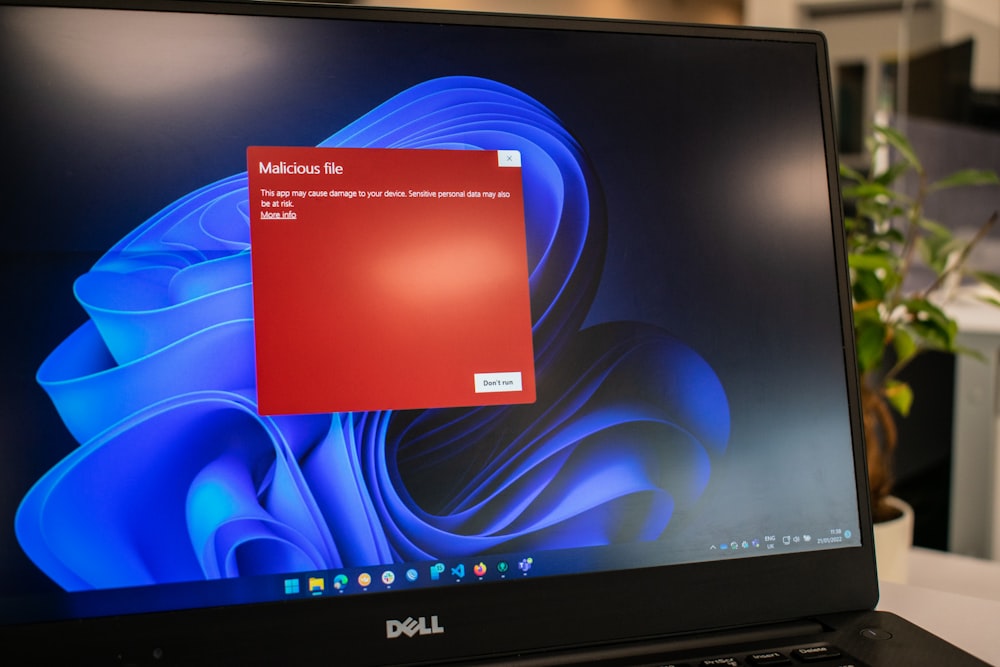How to Prevent Ransomware Attacks: Top 10 Best Practices in 2023

There are over 10 types of malware and ransomware is just one of it. Ransomware is a malicious software that withholds a particular information in exchange for a ransom.
This type of malware became especially prevalent in 2014 and have since then ranked high on the cyber crime radar. Ransomware attacks vital and critical data belonging to an individual or organization. Not only is the leak of this information critical, having no backup files for the withheld data is even worse, especially for a business or organization.
Putting a stop to ransomware attacks is essential and it all starts with prevention. It is possible to prevent ransomware attacks.
In the rest of this article, we will take you through a guide on how to recognize potential ransomware attacks, preventive measures to take, as well as how to reduce ransomware variants risk.
What Are 9 Pro Tips to Prevent Ransomware?

Ransomware is best dealt with before it gains access to your system or important files. Once ransomware attack has been able to access the system, there is little that can be done to alleviate the effects. Prevention is best when dealing with ransomware attack and here are 10 ways to do just that!
Have a backup routine
Normalize backing up your data consistently and using antivirus software. In case of ransomware threats, you can easily wipe your system clean and reinstall your backed up data from your external storage. an easy way to do this is to employ the 3-2-1 rule.
It means you back up your data three times with the use of security tools, on two external devices with the last as offline backups.
Email security
Phishing attacks are one of the most common ransomware delivery methods making email phishing major threat actors.
Adopting an email security team responsible for checking email activity is an effective strategy. It includes preventing download of infected attachments, suspicious websites and identifying social engineering schemes.
User access limit
Especially for businesses and organizations, giving every individual access to critical, vital information can open up the data to ransomware attacks.
Give access to users only based on necessary information they need to get work done. If you work with very sensitive data, it is advised to adopt the zero trust model which restricts all access until validated, both internally and externally in a bid to protect your data.
IT training

People who deal with data consistently need to be trained on how to protect that data. Employees and users are one of the most common ways ransomware attacks are successful.
Conducting due IT training for respective personnel will ensure that they are equipped with the right knowledge and practices to help protect data from ransomware attacks.
Stay Updated
Large organizations and businesses are the hotcake for ransomware attacks. Asides the fact that they have more to protect, they also have less security measures in place.
One of which is outdated legacy systems which lack the most recent and updated preventive measures against prevalent ransomware attacks. Updating all systems and devices puts you at less of a risk of attacks you cannot handle.
Antivirus and firewall protection

One of the most common and effective ways to prevent and block ransomware infection is with the use of an extensive antivirus and antimalware protection system administrators. an antivirus and antimalware best protects your data internally by scanning, detecting, and responding to threats.
Firewalls on the other hand are best for external threats and are the first line of defense against malware attacks on your device and malicious attachments.
Network Segmentation
In most organization, networs are largely connected together. while this has its advantages, a major disadvantage is that a successful ransomware attack on one system will spread all the way to the other.
Segmenting networks and ensuring each one has security measures in place is an effective way to protect against ransomware attack is an effective prevention method.
Whitelisting
This is an activity engaged by most security teams to protect important data by deciding whether an application or software is safe for installation or not. Windows Applocker can be used to whitelist suspicious software, programs, and websites.
Regular security checks

Regular security checks and forensic analysis against ,against malware infection can help network administrators spot any malicious activity or extortion schemes or malicious code and use of antivirus software with the aid of initial investigation to prevent malware attacks.
Adopting a consistent routine to check for security vulnerabilities will help security professionals prevent malware attack.
What Can You Do to Prevent Ransomware Attacks?

There is no one way to prevent ransomware attacks. However, the best prevention is with a combination of a number of security protocols put in place like anti malware software, consistent file backup routine, IT training and good monitoring system.
While none of these procedures individually reduce the risk of ransomware attacks, they can greatly reduce the chances of suffering a widespread ransomware attack from ransomware attackers.
Your operating system is prone to different ransomware variants and an effective vulnerability management system is vital to keep yourself and your devices safe from cyber threats and ransomware attack.
Use popup blockers
Popup blockers are installable software programmes that help prevent and protect your device form malware attacks. These blockers alerts you of potential threat actors which helps security teams find active security solutions as soon as possible and disable autorun.
Most popup blockers can be installed as an extension on your browser which helps block popups from malicious sites which are very likely to be a ransomware tactic.
Watch what you click

SinceAds became so prevalent it is very hard to use the internet or surf the web without coming across a number of popups.
While a number of them such as a malicious link happen to bring things that align with your interest, ransomware attackers have made it their duty to make surfing the net with popups a land mine causing suspicious network traffic. It is important to understand the different ransomware threats .
Secure sites only
There are two types of websites out there; the suce and the not so secure ones. These types of websites are differentiated by the presence or absence of the “s” behind their “HTTP”.these security tools with encryption key sites that do not have the full “https” are not so secure. while this does not mean sites with https are a 100% secure, it does mean you have less of a risk of a ransomware infection with these sites.
Have a recovery plan

Even with so many plans, understand that there are a many ransomware variants each built to slide past even the tightest security systems. With this in mind, it is imperative to always have a recovery backup plan.
When a ransomware attacker strikes, they turn your data to encrypted files which blocks your access to them ,remote desktop protocol then makes a ransom demand for you to access your files again. Having a backup means you really don’t have to pay the ransom.
All you have to do is to have your incident response team handle the ransomware and thereafter, restore data back and you are good to go!
Effective Ways to Prevent Ransomware Attacks and Limit Their Impact
User Education and Training
As a user of operating systems, you need to understand the online advantages as well as threats to your device. User education is vital to protect against ransom ware attacks. Good user education and training teaches a user how to:
- Recognize ransomware tactics
- Avoid malicious links
- Recognize and disconnect from infected devices
- Spot suspicious email attachments and other deception technology
An intensive user education and training procedure will cover all of these and more to well equip the user on all the needed experience to avoid future attacks.
Implement and Enhance Email Security and Email Security Teams
One of the fastest and easiest ways ransomware infections can access your system is through emails. Enhancing your email security and putting things in place will help you protect your important data and files.
A number of ways you can implement and enhance your email security and email security teams include;
The easiest and quickest way to gain entry to a victim is to utilise phishing emails by the victims. In 2019, 69% reported that phishing was the most effective malware delivery method.
Another study compiled by the FBI said that phishing scams were the most widespread cyber crime in 2019. Ransomware is known for infecting users via email.
Usually these suspicious emails contain malicious URLs delivering malware pay-loads to the receivers’computers as their attack surface .
We recommend using e-mail security and other means which blocks access, including URL filters and attachment sandboxes. A system for automated response may enable automatic quarantine of a user’s email addresses after they’ve been opened.
Endpoint Monitoring and Protection
Early detection can help prevent a ransomware threat from affecting a system or its infrastructure. Endpoints need monitoring solutions and automatic termination to prevent infection.
The most effective antivirus tools do their best to prevent ransomware attacks using removable media, but as the threat evolves, the technology usually fails.
The organization should be able to ensure it protects endpoint devices with ERD or other technologies. Currently, advanced attacks may need minutes to compromise endpoints.
User Training and Good Cyber Hygiene
Some malware types, such as ransomware, are accessed through social engineering techniques or by phishing. Training the user to recognize the potential threats will minimize infection.
Those who work with cyber security must focus on human needs. According to Verizon’s 2021 data breach report, 85 percent of these are due to human interactions.
You may be able to find the best solutions using decryption key to protect your employees from cyber attacks but without them knowing the right things to do, you could lose the ability to protect yourself and your mobile devices.
Ensure your team members receive comprehensive training to identify ransomware and spog suspicious cyber activity. An employee must be taught during employment to keep current and in mind while on the job.
Secure Common Infection Vectors
Before you pay the ransom, the ransomware attack will need to reach a network first. Organizations must protect themselves against infection by securing the common infection vectors to protect their devices, and ultimately organizational data.
Restrict Access to Virtualization Management Infrastructure

As previously stated threat actors engaged in big game ransomware attacks continue to innovate to increase their attacks efficiency. This latest version includes the capability to directly attack virtualized systems.
Using these techniques it is easy for the target hypervisor to deploy and store virtual machines (VMDKs). Therefore the endpoint security software installed in the virtualized machine is not aware of malicious activities carried out by the hypervisor.
Restricting access to the virtualization management infrastructure is a key way to protect your data and prevent ransomware attacks.
Data Backups and Incident Response
Since the emergence of ransomware as one of the most profitable ways hackers make money with the aid of well developed malware and deception technology that is effective at breaching even high grade security systems and other critical assets.
In establishing a robust ransomware backup system the best idea to consider offline backups of the data before they deploy ransomware. The best way to recover the data retrieved by ransomware is to restore backups which contain ransomware protection .
Implement a Robust Zero Trust Architecture
Companies should implement zero-trust security architectures to enhance their security postures. Users must be authenticated before they can have a network access code or other information from outside of an organisation.
In addition, you may develop identity management software for IAM. The system also allows IT departments to control all the system information from the user’s identity and other systems.
The Identity Protection Toolkit provides an overview of on-premise identity storage and identity store security among Active Directory, Azure AD and others.
Keep All Systems And Software Updated
Please keep all your operating systems updated with all new versions available. Malware viruses and ransomware constantly evolve as new versions can be bypassed, so you will need the patch updated.
Often the attacker targets larger enterprises using outdated systems that have never been updated including critical assets and this is a major problem. In 2016, a massive ransomware attack surface occurred with the WannaCry software crippling major companies worldwide.
Endpoint Security
Endpoint Security needs to be increased in order to grow business. Increasing the number of end users creates additional devices (laptops, smartphones, servers etc.) requiring protection as business expansion continues.
Using remote endpoints is a potential way for criminals to obtain confidential or even main networks of data from the remote endpoint. When establishing and maintaining a secure enterprise network, you should install an endpoint protection platform (EPP) for every user. This technology provides administrators with securing controls for remote devices with private network .
Firewalls and Network Segmentation
Network segmentation becomes increasingly crucial when the use of cloud services grows particularly in hybrid cloud environments.
With network segmentation organisations divide their networks based on business requirements and grant access to a particular role and trust status. All requests are evaluated based on the trust status of the requestor.
Using these measures will help protect against a threat from lateral movement within a system when they get inside a network with the use of cloud technologies.
In accordance with less-privatised user principles, affected system can be separated using segmentation and microsegmentation to form limited size systems in which an attacker can spread the network and execute lateral movements. The resulting security measures are a way for security to protect against widespread attack
Initially the attack is contained and the malware is stopped and is made to immediately disconnect. Then stop the attack. Once the threat is contained the incident response team must conduct forensic examination to identify the malware in system back door systems and to eliminate any trace to the attacker.
Limit User Access Privileges
Another option to secure networks or systems is to limit users to only data necessary for work. These concepts restrict those accessing essential data. This prevents ransomware from propagating across company systems.
Even with access, users can encounter restricted functions or resources defined by RBAC policies. The low-privilege model generally consists in the zero-trust model where all users are assumed to be trustworthy, and therefore require identity verification at all levels of access.
Run Regular Security Testing
As cyber attacks continue to evolve, companies should perform periodic tests to adapt to changes in the environment. Sandbox testing is an important strategy to detect malicious software against current software to determine whether the security protocol is adequate.
Develop and Pressure-test an Incident Response Plan
Often organizations are aware of threat actors’ activities at work but have no ability or information to identify or address the cause of their problem. Recognizing a threat and implementing a swift response can help distinguish between major incidents and near miss.
In the absence of a plan or book, emergency responses are essential to a rapid decision-making process. A plan covers a range of components of an organization. The security team should be provided with information to help in deciding how to respond to an emergency call.
Data Encryption
The key strategy used in ransom attacks is “extortion”. This threat could have significant negative effects on sensitive data encryption or the entire organisation. However, an encrypted key is a key that can easily be protected against ransomware.
Ransomware Prevention and Protection
Ransomware enables unauthorized use of files or your devices until you receive the ransom. The ransomware attacks usually involve social engineering such as phishing attacks to get victims to open an email attachment.
The malicious attachment from known malicious websites then copies the ransomware onto the computer system and the files are encrypted. Thankfully, with the right ransomware protection and prevention methods, you may not need to worry so much about ransomware.
As technological advances continue it is essential that businesses and users keep up to date with new security practices by mainly leaving security gaps to avoid being exposed to ransomware threats and adware attacks.
Implementation of IT Security and usage of private network best practices can not be done without a large budget, but many companies can use Open-Source tools and adoption software-as-a-service products to implement many best practices at low cost.
It prevents many types of malicious ransomware attacks and allows a company to recover quickly from those successful attacks and infected systems. Find a reliable backup solution to protect yourself against malware.
Ransomware can take down everyone from individuals, and businesses in dozens of ways. It is possible that the software could lock up a single file in databases to cause huge data breaches and expose sensitive personal data.


